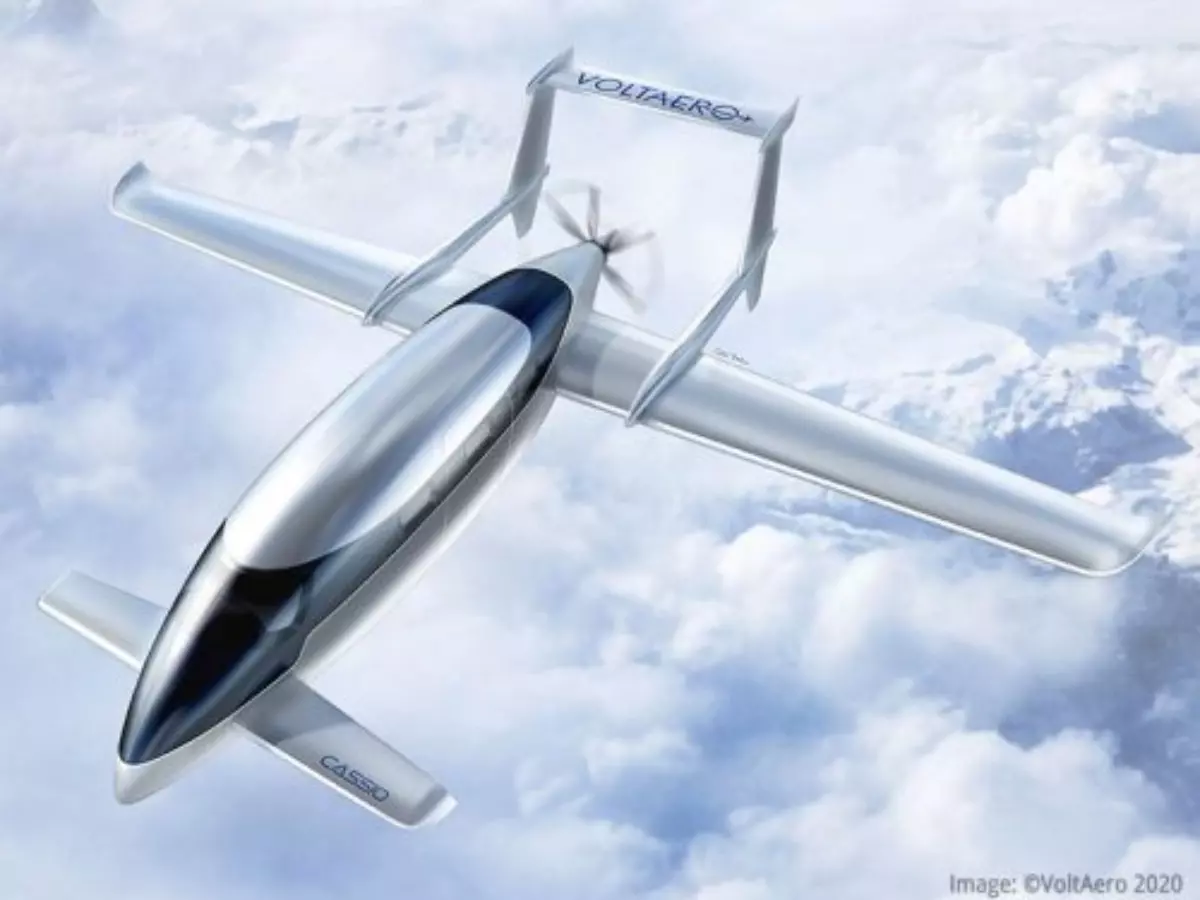VoltAero Cassio Aircraft Uses A Car-Like Hybrid-Electric Propulsion
VoltAero has announced a production ready version of its hybrid-electric aircraft Cassio as the aircraft is called will be available in three versions. The three versions range across seating capacity and motor power Cassio 330 the base variant comes with a four-seat configuration. Cassio 480 increases this to six seats and a power of 480 kilowatts whereas the Cassio 600 comes with 10-seat capacity and 600 kilow Watts of power.

After its prototype took to the skies in a maiden flight in March, VoltAero has now announced a production ready version of its hybrid-electric aircraft. Cassio, as the aircraft is called, will be available in three versions.
For those unaware, VoltAero is a French startup attempting to revolutionise air travel with cleaner - hybrid and electric aircrafts. In its recent update, the company affirms that it will be coming up with the first of the three versions of the aircraft by as soon as 2022.
The three versions range across seating capacity and motor power. Cassio 330, the base variant, comes with a four-seat configuration with propulsion from a combined hybrid-electric power of 330 kilowatts. Cassio 480, increases this to six seats and a power of 480 kilowatts whereas the Cassio 600 comes with a 10-seat capacity and 600 kilowatts of power.
One look at the Cassio and we can figure that it stands out from the conventional design of an airplane. That is also because the design comes as a VoltAero proprietary and focuses on making the aircraft sleek, with aerodynamically-optimized fuselage, a forward fixed canard (the small canard or foreplane seen on the aircraft), and an aft-set wing with twin booms that support a high-set horizontal tail.
As for its propulsion, Cassio uses a cluster of VoltAero¡¯s hybrid-electric power module integrated with a high-performance internal combustion engine that serves as the range extender. As of now, VoltAero is validating the hybrid powertrain on its Cassio 1 flight test aircraft to ensure certification and production.
 VoltAero Cassio Hybrid Electric Aircraft (Image: VoltAero)
VoltAero Cassio Hybrid Electric Aircraft (Image: VoltAero)
The performance indicators of the hybrid-electric aircraft include a range of 800 miles (close to 1300 km), cruise speed of 200 knots, and an autonomy of 3.5 hours, with a possible extension to 5 hours. The company mentions a takeoff weight limit of under 2.5 metric tons as per EASA CS23 certification and a take-off/landing distance of less than 1,800 feet.
VoltAero highlights that the Cassio family of airplanes is meant for operation by ¡°private owners, air taxi/charter companies, in commercial flights for point-to-point regional travel, and in various utility-category applications.¡± Its certification will adhere to Europe¡¯s EASA CS23 certification specification as a ¡°single-engine, general aviation category aircraft,¡± the company notes.
Such efforts to reduce the harmful emissions during air travel are being carried out by other aviation players as well. Another firm that is targeting to do so by the production of all electric aircrafts by 2022 is MagniX. Based on the available battery technology, the company currently aims to produce electric aircrafts for short haul flights. Here is how it plans to do so.
Aviation major Airbus also revealed a new aircraft design that promised to reduce fuel consumption by as much as 20% per flight. You can read all about it here.
